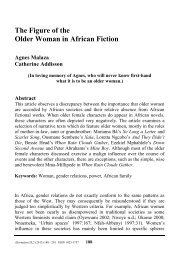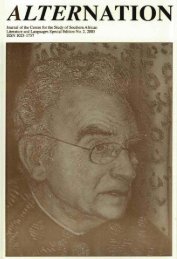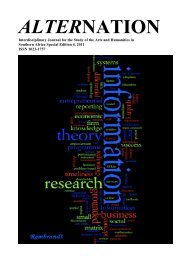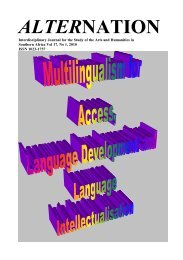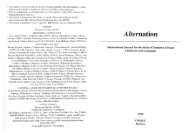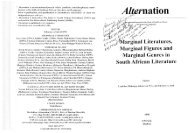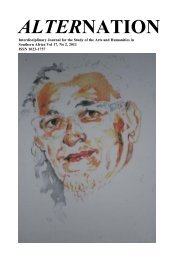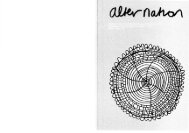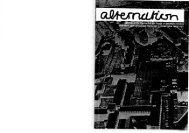Re-reading The Purloined Letter - Alternation Journal
Re-reading The Purloined Letter - Alternation Journal
Re-reading The Purloined Letter - Alternation Journal
You also want an ePaper? Increase the reach of your titles
YUMPU automatically turns print PDFs into web optimized ePapers that Google loves.
Pravina Pillay<br />
of real effects in its wake. Ragland-Sullivan and Bracher (1991:09) believe<br />
that Poe’s story fascinates Lacan most probably because it is empty of<br />
content, laying bare the path of signifying effects that catalyze the desire to<br />
narrate as itself a defense against desire. Neither Lacan, Poe, nor Dupin seek<br />
to know what is in the letter.<br />
<strong>The</strong> letter offers a focus for an allegory of gazes—a story concerning<br />
the ‘right way of seeing’, for only those who know how to look for it will<br />
find it, only a specific interpretative strategy will reveal the object (even<br />
though its content remains veiled). <strong>The</strong> police, failing to find the letter, are<br />
‘realists’, operating on reality with a common-sense stupidity which can only<br />
see selectively. Muller and Richardson (1988:40) state:<br />
<strong>The</strong>irs is the realist’s imbecility, which does not pause to observe<br />
that nothing, however deep in the bowels of the earth a hand may<br />
seek to ensconce it, will never be hidden there, since another hand<br />
can always retrieve it, and that what is hidden is never but what is<br />
missing from its place, as the call slip puts it when speaking of a<br />
volume lost in a library. And even if the book may be on an adjacent<br />
shelf or in the next slot, it would be hidden there, however visibly it<br />
may appear.<br />
To Dupin, as to the psychoanalyst, nothing in the unconscious, or the library<br />
or the text is ever lost or finally hidden. Psychoanalysis, like detective work,<br />
thus becomes a question of developing the right way of seeing, of casting off<br />
the imbecility of the realist. How did Dupin guess the hiding place straight<br />
away? An accurate assumption, he tells us, that the clever Minister would be<br />
sure to avoid all the most obscure places of concealment (which were bound<br />
to be searched by the conscientious police), and would place the letter in a<br />
prominent, open position. <strong>The</strong> average intellect, Dupin argues ‘suffers to<br />
pass unnoticed those considerations which are too obtrusively and too<br />
palpably self-evident’ (Lacan in <strong>The</strong> <strong>Purloined</strong> Poe 1988:20). According to<br />
Ruth Van Herik (1985:50) by Lacanian extension, the ‘proper place’ of the<br />
letter, obvious only to Dupin (who stands in for the analyst), is the place of<br />
castration represented by the woman’s body. Lacan (1985:50) describes the<br />
‘spot’ in these terms:<br />
378



